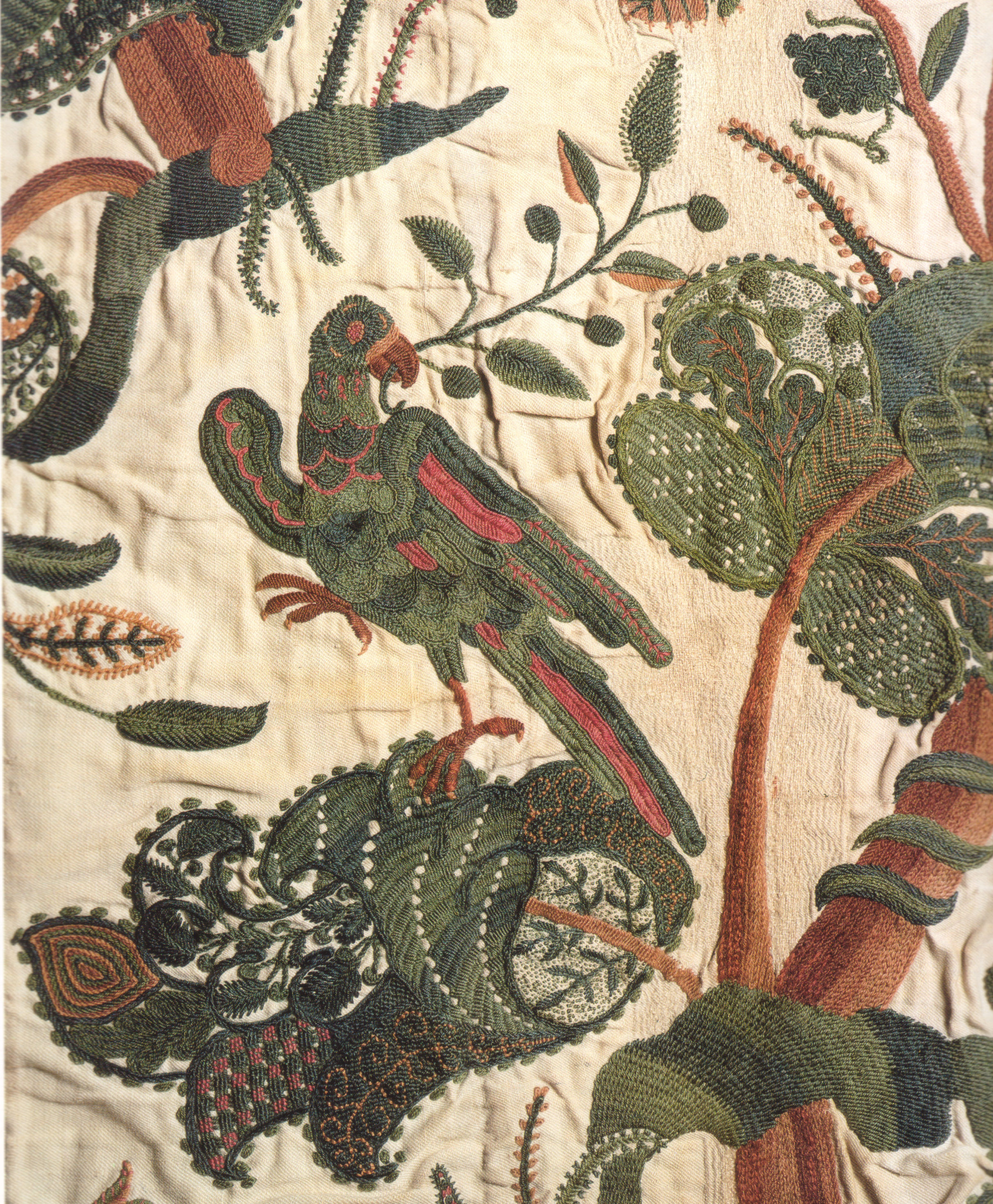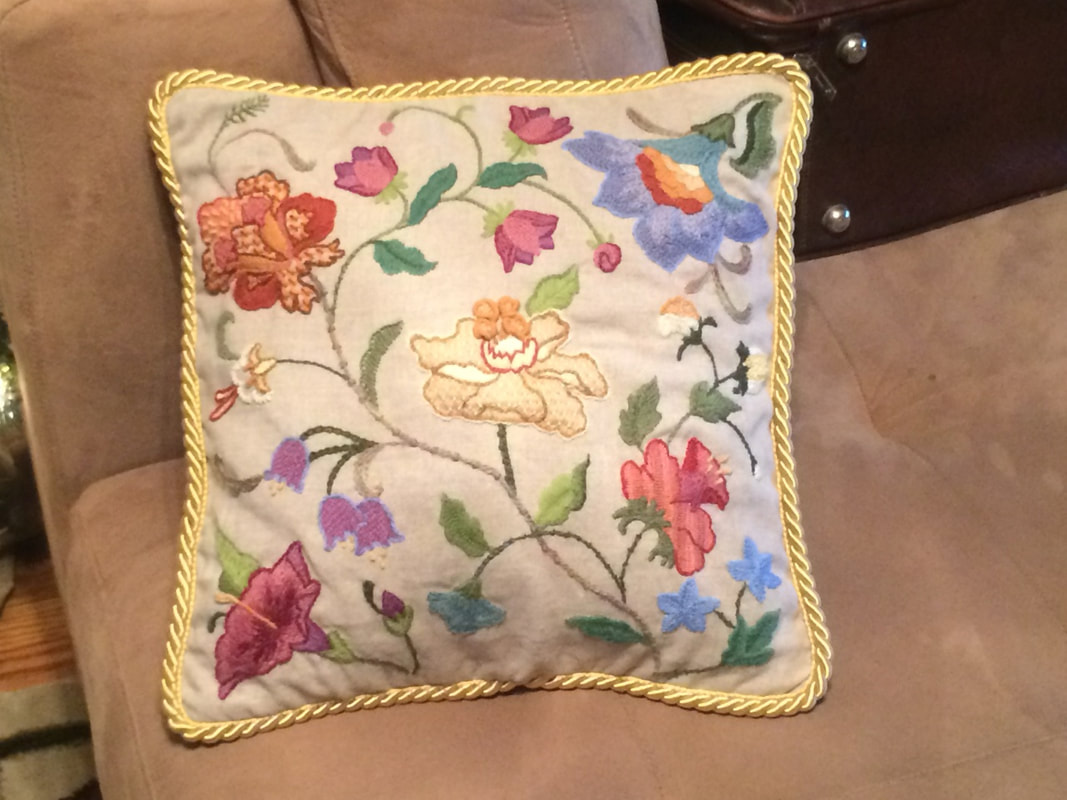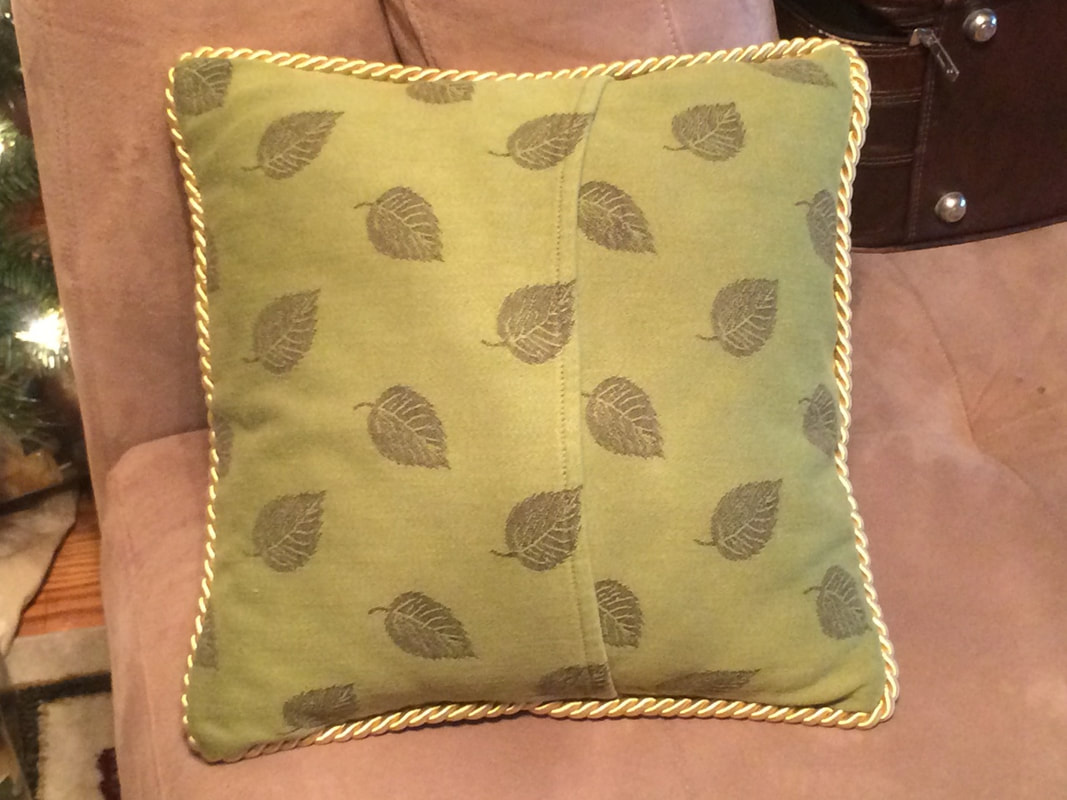Aaaand waited. After a few months, I complained to the seller, contested the charge on my credit card, and generally made a stink. Then the darn thing showed up! Sometimes you just have to be the squeaky wheel! Doing crewel embroidery was just as fun as I had remembered! There was a free-ness to it that I enjoyed, as opposed to the counted cross-stitch my mom and sister favor. The colors and textures of the thread were pleasing, and the way the stitches can be built up to give the work dimension always excited me. Plus, the wide variety of stitches was interesting. Once I finished the pattern, I used some scrap fabric (old table napkins) to make the back of a pillow case, and made a pillow to fit inside. The whole project was handwork because I had no sewing machine. EMBROIDERY TYPES There are many ways of categorizing embroidery, such as by materials, by region of origin, by similarity of appearance or technique... One method looks at how the embroidery relates to the fabric, and yields three types: free embroidery; counted embroidery; and needlepoint. Free embroidery, or surface embroidery, has the design applied to the surface of the fabric, as a decorative element. The thread relates to the fabric much as paint relates to a canvas: by sitting atop it. Crewelwork is free embroidery. Counted embroidery is where the stitches are metered by counting over a certain number of threads on the base cloth, for even size and shape. Not only are you counting the threads of the fabric (made easier by even-weave cloth like aida cloth), you are also counting the stitches you make, to make regular designs or to follow a pattern based on a grid. In counted embroidery, the thread relates to the fabric like a child relates to a hopscotch court: by using it to determine where to jump and how far. Needlepoint is when the entire surface of the base fabric is covered, thus creating a new, heavier fabric. In the not-so-distant past, plain cotton fabrics were often covered with elaborate needlepoint designs and then used as pillow fronts and chair cushions. You'll see them often at thrift stores and antique markets. I recently saw one such chair at a friend's house, and she didn't believe me when I told her it was hand embroidered: she thought that was just the fabric! In needlepoint, the thread relates to the fabric like a flood relates to the ground beneath it: it saturates it, covers it, and erases all memory of the original! NOWADAYS Nowadays I still enjoy embroidery, but haven't done it in a while. Instead, I do needlelace, which has similarities to embroidery. Like my crewel kit, a piece of needlelace starts with a line-drawing of a pattern, and I can fill it in pretty much freehand, using a variety of stitches and combinations, even building it up for dimension. Like needlepoint, needlelace depends on the whole surface of the pattern being covered thoroughly, but differs in that when it's done, the pattern is taken away, and the embroidery hangs together with no base at all. There's a tag for Lacemaking on this blog so you can see my work.
1 Comment
Leave a Reply. |
Karen Roy
Quilting, dressmaking, and history plied with the needle... Sites I EnjoyThe Quilt Index Categories
All
Archives
March 2024
|



 RSS Feed
RSS Feed